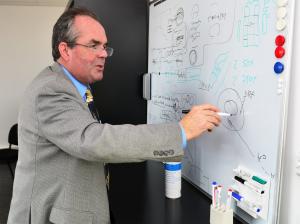Hot, hotter, hottest
How will the ITER plasma be brought to such extreme temperatures—ten times higher, or more, than the core of the Sun?
Ohmic was the only heating source on the Soviet T-3, which achieved plasma temperatures in the range of 10 million degrees in the late 1960s—an achievement that left the nascent world fusion community agog and launched the tokamak race worldwide.
The challenging technology of ITER's neutral beam system will be tested in a dedicated installation that was inaugurated a year ago almost to the day: the PRIMA Neutral Beam Test Facility in Padua, Italy. In parallel, IPP Garching is developing ELISE, an ion source half the size of ITER's; success on this test bed will greatly reduce the risk associated with the final development of the full-size ITER ion source at the SPIDER test facility.





